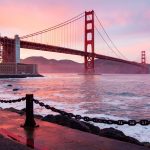Haight-Ashbury, a vibrant neighborhood in San Francisco, California, has been a symbol of counterculture, artistic expression, and social change since the 1960s. This historic district, adjacent to the sprawling Golden Gate Park, underwent a remarkable transformation during the “Summer of Love” in 1967, when thousands of young people converged to challenge societal norms and embrace a new way of life.
In This Article
Key Points
- Haight-Ashbury was the epicenter of the 1960s counterculture and hippie movement
- The neighborhood is known for its stunning Victorian homes and proximity to Golden Gate Park
- Iconic figures and events in music and art have left a lasting legacy in Haight-Ashbury
Planning Your Visit to Haight-Ashbury
When planning your visit to Haight-Ashbury, consider the best times of year to experience its unique cultural events. The neighborhood comes alive during the annual Haight-Ashbury Street Fair in June and the Jerry Day celebration in August, honoring the late Grateful Dead frontman Jerry Garcia.
To navigate the neighborhood, you can easily walk or bike through the streets lined with colorful Victorian homes. Public transportation options include the N-Judah Muni Metro line and several bus routes that connect Haight-Ashbury to other parts of the city.
Staying in the Heart of History: Accommodations in Haight-Ashbury
Immerse yourself in the history of Haight-Ashbury by staying in one of the neighborhood’s iconic Victorian homes, many of which have been converted into charming bed and breakfasts or vacation rentals. For a more modern experience, there are also boutique hotels and hostels in the area that cater to a variety of budgets and preferences.
Exploring the Cradle of Counterculture
Discover the roots of the Beat Generation and the hippie movement by taking a walking tour through Haight-Ashbury. Knowledgeable guides will lead you to significant landmarks, such as the former homes of Janis Joplin, Jimi Hendrix, and members of the Grateful Dead. Along the way, you’ll learn about the influence of psychedelic rock and the cultural revolution that took place in the 1960s.
The Summer of Love and Beyond: Events that Shaped Haight-Ashbury
The Summer of Love in 1967 was a defining moment for Haight-Ashbury, attracting an estimated 100,000 young people to San Francisco. Key events leading up to this cultural phenomenon included the Human Be-In in January 1967 and the Love Pageant Rally in October 1966, both held in Golden Gate Park. These gatherings, fueled by a belief in the power of psychedelic drugs and opposition to the Vietnam War, set the stage for the counterculture movement that would define an era.
Music and Artistry in Haight-Ashbury
Haight-Ashbury was home to some of the most influential musicians of the 1960s, including the Grateful Dead, Janis Joplin, Jimi Hendrix, and Jefferson Airplane. Their psychedelic rock sound and rebellious spirit captured the essence of the counterculture movement. The neighborhood also became a hub for psychedelic art and Eastern spiritualism, which heavily influenced the aesthetics and philosophy of the hippie culture.
The Architecture of Haight-Ashbury: Victorian Homes and Beyond
One of the most striking features of Haight-Ashbury is its beautifully preserved Victorian architecture. These colorful, ornate homes, built in the late 19th and early 20th centuries, provide a charming backdrop to the neighborhood’s rich history. Many of these homes have been carefully maintained and now serve as private residences, businesses, or vacation rentals.
To explore the best-preserved Victorian homes, take a stroll along Haight Street, Ashbury Street, and the surrounding blocks. Keep an eye out for the “Painted Ladies,” a row of colorful Victorian houses on Steiner Street, just a short walk from Haight-Ashbury.
Haight-Ashbury’s Legacy and Modern Culture
While Haight-Ashbury has evolved since the 1960s, it still maintains a strong connection to its countercultural roots. Today, the neighborhood is a mix of vintage clothing stores, independent bookshops, record stores, and eclectic cafes. Street art, murals, and impromptu musical performances continue to showcase the creative spirit that has long defined the area.
Haight-Ashbury’s Role in Social Movements
Haight-Ashbury’s history of social activism extends beyond the 1960s. The neighborhood has been associated with various anarchist groups and political movements over the years. Today, the spirit of social change lives on through community organizations, progressive businesses, and the ongoing fight for equality and justice.
Golden Gate Park: An Urban Oasis Next to Haight-Ashbury
Golden Gate Park, which borders Haight-Ashbury to the south, played a significant role during the counterculture era as a gathering place for concerts, rallies, and the famous “Acid Tests” organized by Ken Kesey and the Merry Pranksters. Today, the park offers a variety of attractions and events, including the California Academy of Sciences, the de Young Museum, and the annual Outside Lands Music and Arts Festival.
The Psychedelic Experience: LSD, Free Love, and Social Experimentation
LSD and the concept of free love were central to the Haight-Ashbury scene in the 1960s. Ken Kesey, the Merry Pranksters, and the San Francisco Oracle, an underground newspaper, played significant roles in promoting psychedelic experimentation and challenging societal norms. This spirit of exploration and pushing boundaries left a lasting impact on American culture.
FAQ
What was the significance of Haight-Ashbury in the 1960s?
Haight-Ashbury was the epicenter of the counterculture movement in the 1960s, attracting thousands of young people who challenged societal norms, embraced free love, and experimented with psychedelic drugs.
How did the Summer of Love impact Haight-Ashbury?
The Summer of Love in 1967 brought an estimated 100,000 people to Haight-Ashbury, solidifying the neighborhood’s role as the heart of the hippie movement and forever changing its cultural landscape.
Can visitors stay in actual Victorian homes in Haight-Ashbury?
Yes, many of the historic Victorian homes in Haight-Ashbury have been converted into bed and breakfasts, vacation rentals, and boutique hotels, allowing visitors to immerse themselves in the neighborhood’s unique architecture and history.
What are some must-see landmarks related to the 1960s counterculture in Haight-Ashbury?
Must-see landmarks include the former homes of iconic musicians like Janis Joplin, Jimi Hendrix, and the Grateful Dead, as well as significant gathering places like Golden Gate Park and the intersection of Haight and Ashbury streets.
How has Haight-Ashbury evolved since the 1960s?
While Haight-Ashbury has undergone changes since the 1960s, it still maintains a strong connection to its countercultural roots through its vibrant art scene, independent businesses, and community activism.

